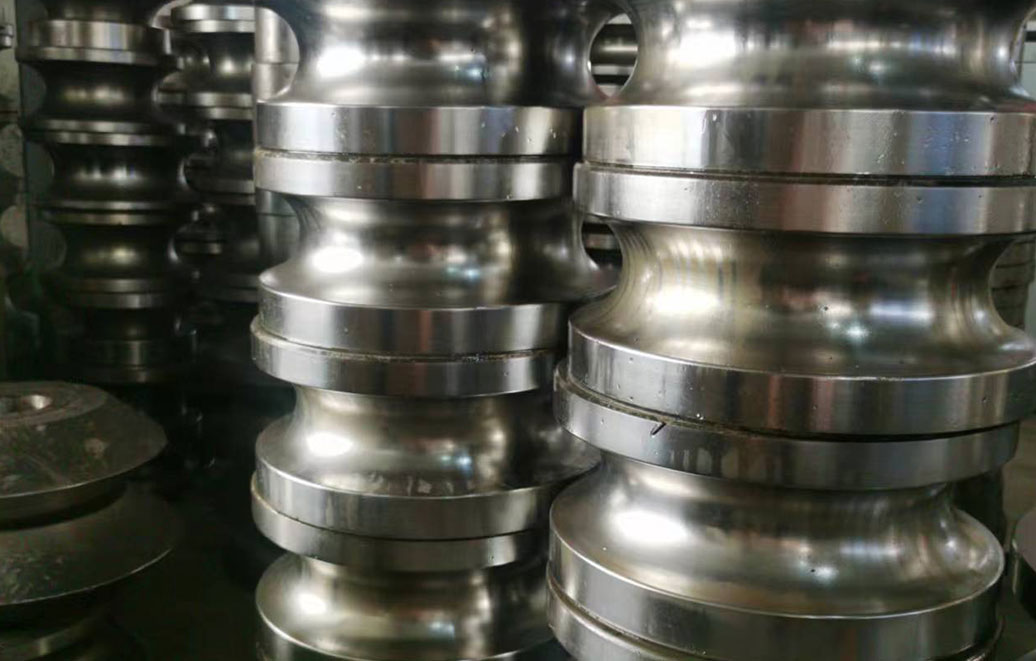steel rollforming machines
The Evolution and Significance of Steel Roll Forming Machines
Steel roll forming machines have become an integral part of the manufacturing industry, particularly in the production of metal components that are essential for various sectors, including construction, automotive, and appliance manufacturing. These machines have undergone significant evolution over the years, transforming from simple manual setups to highly sophisticated automated systems.
Understanding the Basics of Roll Forming
At its core, roll forming is a continuous bending operation in which a long strip of metal, usually steel, is passed through a series of rollers that progressively shape it into a desired cross-section. The process begins with a flat sheet or strip of metal, which is fed into the roll forming machine. As it moves through a set of roller dies, the metal is gradually formed into the requisite shape, which could range from simple channels to complex profiles used in structural applications.
The roll forming process is known for its efficiency and precision. By utilizing high-tonnage presses and precisely engineered rollers, manufacturers can produce components with tight tolerances and consistent quality. This is crucial for industries that require reliable and durable parts that can withstand significant stress and loads.
The Advancements in Technology
Modern steel roll forming machines incorporate advanced technology, including computer numerical control (CNC) systems, which enhance automation and accuracy. These systems allow operators to program the machines to produce different profiles without the need for extensive manual setup. This capability not only speeds up the production process but also significantly reduces the potential for human error.
Moreover, the integration of robotics has further fortified the efficiency of roll forming operations. Automated material handling systems can swiftly transport raw materials to the machines and remove finished products, enabling a seamless flow in the manufacturing process. This level of automation not only boosts productivity but also minimizes labor costs and safety risks associated with manual handling.
Applications of Steel Roll Forming
steel rollforming machines

The versatility of steel roll forming machines allows them to be used across a myriad of applications. In the construction sector, roll-formed steel products are widely used in the creation of roof and wall panels, purlins, and framing systems. Their lightweight yet strong properties make them ideal for both residential and commercial buildings.
In the automotive industry, roll forming is utilized to manufacture components such as chassis and reinforcements, where strength and weight reduction are paramount. Similarly, the appliance industry benefits from roll-formed components used in the production of durable and visually appealing finished products.
Additionally, the energy sector utilizes roll forming machines to create structural components for renewable energy systems, such as solar panel frames and wind turbine parts, illustrating the machines’ versatility and relevance in supporting sustainable practices.
The Advantages of Roll Forming
One of the key advantages of using steel roll forming machines is the material efficiency they offer. The continuous process minimizes wastage, as the design of the rollers allows for the maximization of raw materials. Additionally, the ability to produce longer lengths of formed shapes without the need for additional seams or joints enhances the structural integrity of the finished products.
Another benefit is the potential for customization. Manufacturers can create unique profiles tailored to specific project requirements. With advancements in CAD (Computer-Aided Design) technology, engineers can easily design complex shapes and specify the necessary parameters, which can then be directly programmed into the roll forming machines.
Conclusion
Steel roll forming machines represent a cornerstone of modern manufacturing, driving innovation across various industries. Their ability to produce high-quality, consistent, and durable components efficiently has made them indispensable in today’s production environments. As technology continues to evolve, the future of roll forming looks promising, with ongoing improvements in automation, precision, and sustainability. In a world that increasingly values efficiency and resilience, steel roll forming machines will undoubtedly continue to play a critical role in shaping our infrastructure and consumer products.
-
High Frequency Straight Seam Welded Pipe Production Line-BzZhou Xinghua Machinery Equipment Manufacturing Co., LTD.|line pipe steel&welded gas pipeNewsJul.30,2025
-
High Frequency Straight Seam Welded Pipe Production Line-BzZhou Xinghua Machinery Equipment Manufacturing Co., LTD.|High Precision&Automated SolutionsNewsJul.30,2025
-
High Frequency Straight Seam Welded Pipe Production Line - BzZhou Xinghua Machinery Equipment Manufacturing Co., Ltd.NewsJul.30,2025
-
High Frequency Straight Seam Welded Pipe Production Line-BzZhou Xinghua Machinery Equipment Manufacturing Co., LTD.|Precision Welding, High EfficiencyNewsJul.30,2025
-
High Frequency Straight Seam Welded Pipe Production Line|BzZhou Xinghua|Precision Welding&EfficiencyNewsJul.30,2025
-
High Frequency Straight Seam Welded Pipe Production Line - BzZhou Xinghua|Precision Engineering&EfficiencyNewsJul.30,2025


